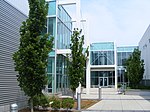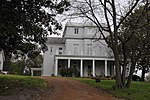Franklin Road Academy

Franklin Road Academy (FRA) is a private co-educational Christian school for students in pre-kindergarten through grade 12 located in Oak Hill, Tennessee. The school was founded in 1971 and originally affiliated with the First Christian Church before it became a separate incorporated organization in 1982. FRA has been described as a segregation academy, like other schools established after a court ordered Nashville public schools to expand desegregation busing.As of 2019, its head of school is Sean Casey and its head of upper school is Jay Salato. In 2016, FRA's enrollment was 795 students with ethnic and racial minority students comprising 18 percent of the student body. As of 2021, the school's enrollment had increased to 925 students. Its enrollment increased to 1,040 students in 2022. FRA is accredited by the Southern Association of Colleges and Schools, Southern Association of Independent Schools and AdvancED.
Excerpt from the Wikipedia article Franklin Road Academy (License: CC BY-SA 3.0, Authors, Images).Franklin Road Academy
Harding Place, Nashville-Davidson
Geographical coordinates (GPS) Address External links Nearby Places Show on map
Geographical coordinates (GPS)
| Latitude | Longitude |
|---|---|
| N 36.084166666667 ° | E -86.769722222222 ° |
Address
Franklin Road Academy
Harding Place
37220 Nashville-Davidson
Tennessee, United States
Open on Google Maps







